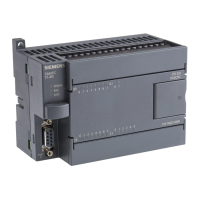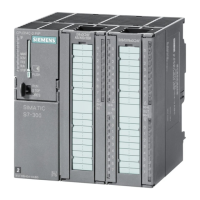Glossary
CPU 31xC and CPU 31x, Technical data
Glossary-20 Manual, Edition 08/2004, A5E00105475-05
STEP 7
Engineering system. Contains programming software for the creation of user programs for
SIMATIC S7 controllers.
Subnet mask
The bits set in the subnet mask decides the part of the IP address that contains the address
of the subnet/network.
In general:
• The network address is obtained by an AND operation on the IP address and subnet
mask.
• The node address is obtained by an AND NOT operation on the IP address and subnet
mask.
Subnetwork
All the devices connected by switches are located in the same network - a subnet. All the
devices in a subnet can communicate directly with each other.
All devices in the same subnet have the same subnet mask.
A subnet is physically restricted by a router.
Substitute
See Proxy
Substitute value
Substitute values are configurable values which output modules transfer to the process when
the CPU switches to STOP mode.
In the event of an I/O access error, a substitute value can be written to the accumulator
instead of the input value which could not be read (SFC 44).
Switch
PROFIBUS is based on a bus topology. Communication nodes are connected by a passive
cable - the bus.
In contrast, Industrial Ethernet is made up of point-to-point links: Each communication node
is connected directly to one other communication node.
If a communication node needs to be connected to several other communication nodes, this
communication node is connected to the port of an active network component- a switch.
Other communications nodes (including switches) can then be connected to the other ports
of the switch. The connection between a communication node and the switch remains a
point-to-point link.
The task of a switch is therefore to regenerate and distribute received signals. The switch
"learns" the Ethernet address(es) of a connected PROFINET device or other switches and
forwards only the signals intended for the connected PROFINET device or connected switch.
A switch has a certain number of ports. At each port, connect a maximum of one PROFINET
device or a further switch.

